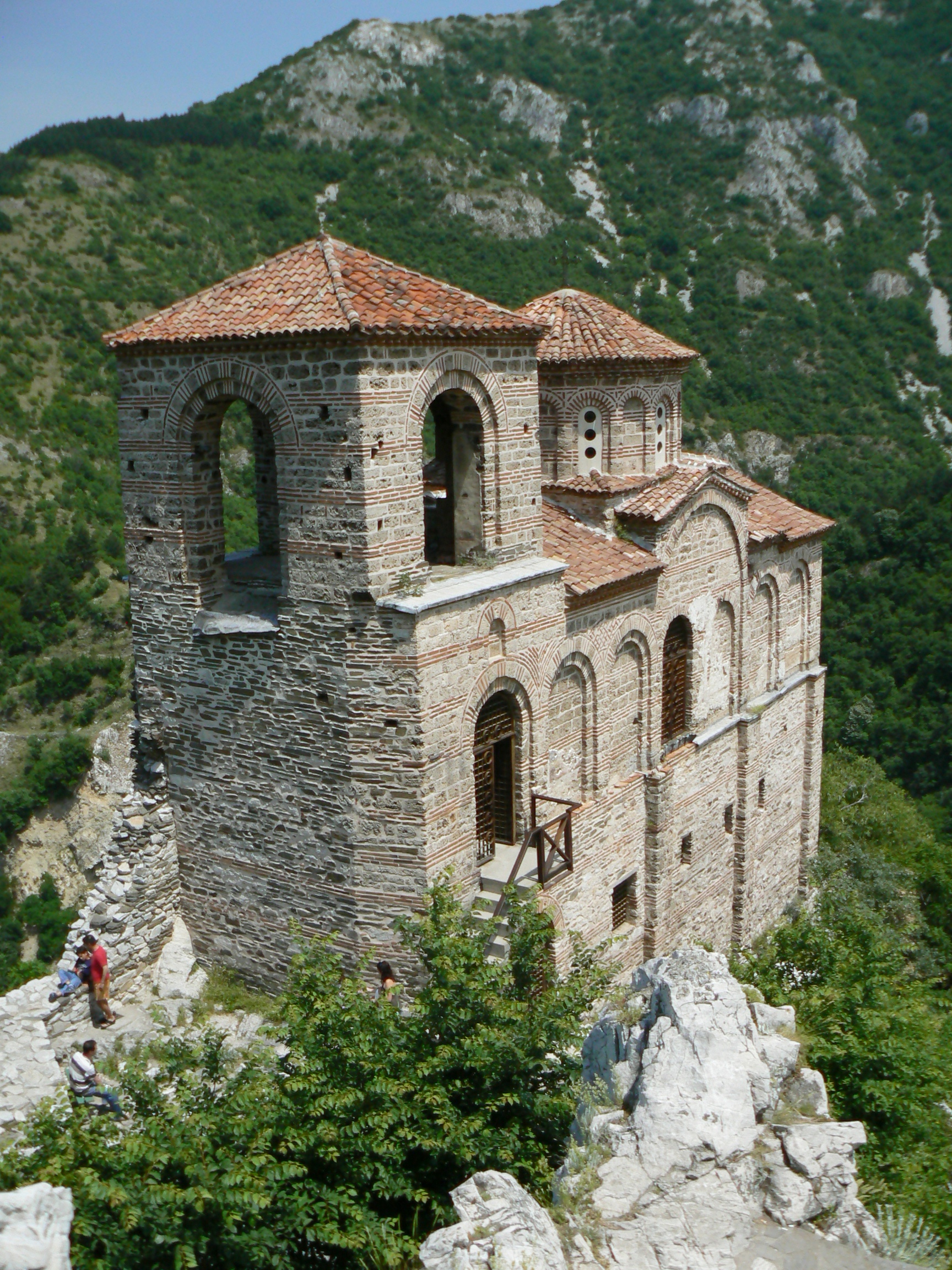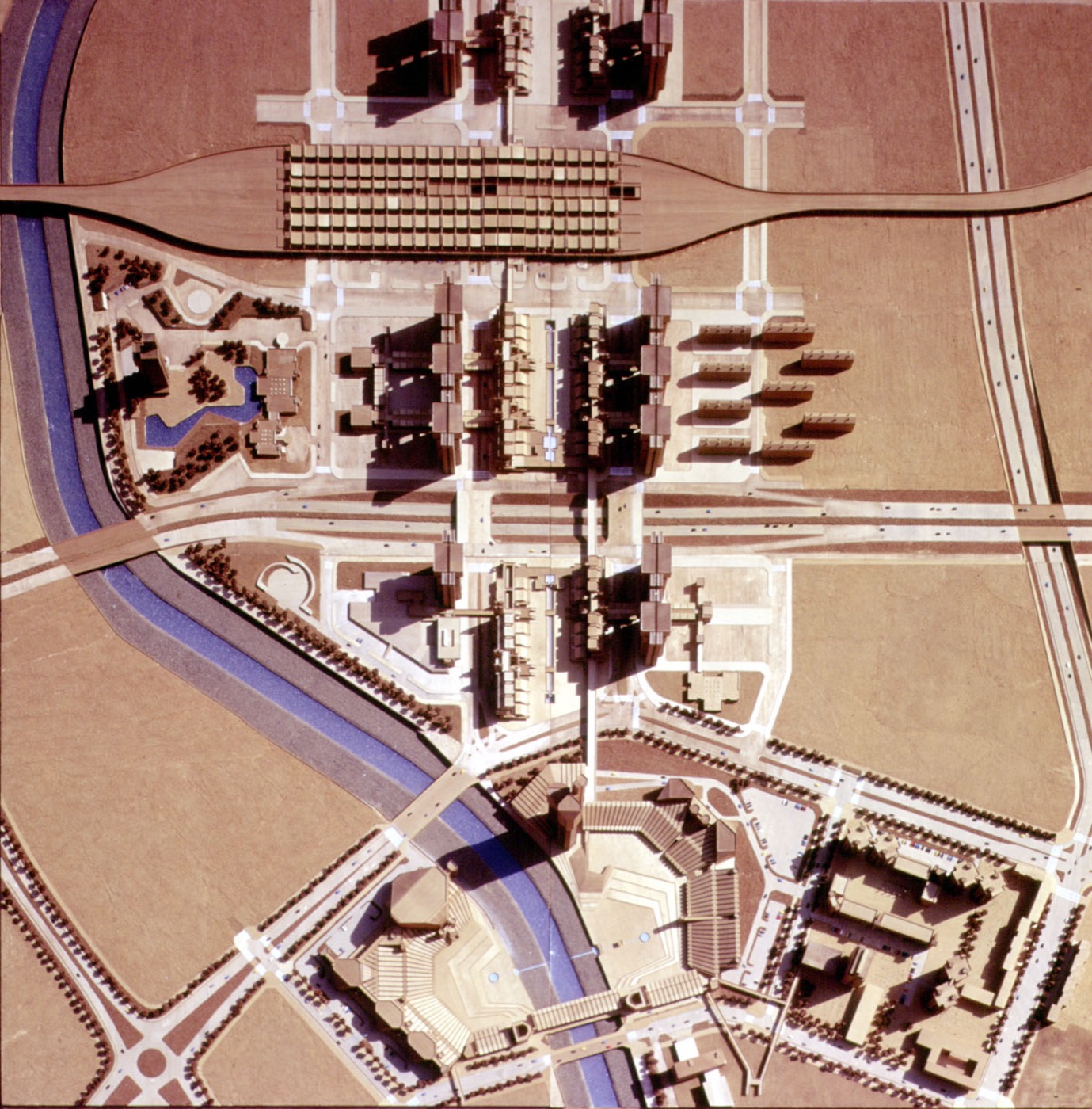|
Constantinos Apostolou Doxiadis
Constantinos A. Doxiadis (14 May 1913 – 28 June 1975), often cited as C. A. Doxiadis, was a Greek architect and urban planner. During the 1960s, he was the lead architect and planner of Islamabad, which was to serve as the new capital city of Pakistan. He was later known as the father of ekistics, which concerns the multi-aspect science of human settlements. Theories Doxiadis is the father of " ekistics", which concerns the science of human settlements, including regional, city, community planning and dwelling design. The term was coined by Doxiadis in 1942 and a major incentive for the development of the science is the emergence of increasingly large and complex settlements, tending to regional conurbations and even to a worldwide city. However, ekistics attempts to encompass all scales of human habitation and seeks to learn from the archaeological and historical record by looking not only at great cities, but, as much as possible, at the total settlement pattern. Doxiad ... [...More Info...] [...Related Items...] OR: [Wikipedia] [Google] [Baidu] |
Asenovgrad
Asenovgrad ( ) is a town in central southern Bulgaria, part of Plovdiv Province. It is the largest town in Bulgaria that is not a province center. Previously known as ''Stanimaka'' (; ), it was renamed in 1934 after the 13th-century tsar Ivan Asen II. Asenovgrad also includes the districts of Gorni Voden and Dolni Voden, which until 1986 were separate villages. According to the census data of 2021, the population of the city is 47 815 people. Above the town are the remains of the Asen Fortress, an old fortress that was strengthened under Tsar Ivan Asen II and turned into an important military post in the defense of the southern borders of the Second Bulgarian Kingdom.The city is known for its many churches, monasteries and chapels and is often called Little Jerusalem. It is also known as the "City of Bridal Gowns" because of the large number of ateliers and shops for wedding dresses and accessories. The majority of Asenovgrad residents are Bulgarians, with representatives of th ... [...More Info...] [...Related Items...] OR: [Wikipedia] [Google] [Baidu] |
Lavrion
Lavrio, Lavrion or Laurium (; (later ); from Middle Ages until 1908: Εργαστήρια ''Ergastiria'') is a town in southeastern part of Attica, Greece. It is part of Athens metropolitan area and the seat of the municipality of Lavreotiki. Laurium was famous in Classical antiquity for its silver mines, which was one of the chief sources of revenue of the Athenian state. The metallic silver was mainly used for coinage. The Archaeological Museum of Lavrion shows much of the story of these mines. It is located about 60 km SE of Athens city center, SE of Keratea and N of Cape Sounio. Laurium is situated on a bay overlooking the island of Makronisos (ancient times: Helena) in the east. The port is in the middle and gridded streets cover the residential area of Lavrio. GR-89 runs through Lavrio and ends south in Sounio. History The modern town of Lavrio is at the site of the ancient village of Thoricus; its name is taken from that of the entire region of the Mines ... [...More Info...] [...Related Items...] OR: [Wikipedia] [Google] [Baidu] |
Teacher-Student Centre (TSC), University Of Dhaka
Teacher-Student Centre (), also known as TSC, is a building on the Dhaka University campus in Shahbagh, Dhaka, Bangladesh. The centre was established in 1961 by the Dhaka University by the Division of Public Affairs. History The construction of the Teacher-Student Centre was financed by the Pakistan Government and the Ford foundation. Parts of the site used to be land of the old Sujatpur Palace grounds (the oldest Nawab Mansion in Shahbagh). There was a Greek cemetery on the west side of the race course, now Suhrawardy Udyan. Many historically important political meetings and discussions were held at the Teacher-Student Centre during the Bangladesh Liberation War. Architectural significance The main building was designed by Konstantinos Doxiadis, a Greek architect and town planner. An example of modern architecture, according to architect Mahbubur Rahman it takes into account indigenous culture, climate, and spatial arrangement. Arranged around a court, it has an extra ... [...More Info...] [...Related Items...] OR: [Wikipedia] [Google] [Baidu] |
Reconstruction Of Skopje 1963
Plan for Skopje 1963 was the urban and architectural plan put forward to rebuild the city of Skopje following the 1963 Skopje earthquake. The plan was organised between 1963 and 1966 by the government of Yugoslavia and the United Nations. The rebuilding of the city attracted large international attention, this led to the involvement of a large number of high-profile architects. The UN invited Kenzo Tange and his team to participate in an international competition for the urban design of the city centre in 1965; as one of several Yugoslav and international architecture teams. Architects that participated in the plan include Greek architect Constantinos Doxiadis and Polish architect Adolf Ciborowski. Dutch architects Van den Broek and Jaap Bakema. Luigi Piccinato (Italy) and Maurice Rotival (USA). Yugoslav participants included Aleksandar Dordevik, Slavko Brezoski, Edvard Ravnikar, Radovan Miščević and Fedor Wenzler. The plan is unique in its architectural focus invol ... [...More Info...] [...Related Items...] OR: [Wikipedia] [Google] [Baidu] |
Iraq
Iraq, officially the Republic of Iraq, is a country in West Asia. It is bordered by Saudi Arabia to Iraq–Saudi Arabia border, the south, Turkey to Iraq–Turkey border, the north, Iran to Iran–Iraq border, the east, the Persian Gulf and Kuwait to the Iraq–Kuwait border, southeast, Jordan to Iraq–Jordan border, the southwest, and Syria to Iraq–Syria border, the west. The country covers an area of and has Demographics of Iraq, a population of over 46 million, making it the List of countries by area, 58th largest country by area and the List of countries by population, 31st most populous in the world. Baghdad, home to over 8 million people, is the capital city and the List of largest cities of Iraq, largest in the country. Starting in the 6th millennium BC, the fertile plains between Iraq's Tigris and Euphrates rivers, referred to as Mesopotamia, fostered the rise of early cities, civilisations, and empires including Sumer, Akkadian Empire, Akkad, and Assyria. Known ... [...More Info...] [...Related Items...] OR: [Wikipedia] [Google] [Baidu] |
Baghdad
Baghdad ( or ; , ) is the capital and List of largest cities of Iraq, largest city of Iraq, located along the Tigris in the central part of the country. With a population exceeding 7 million, it ranks among the List of largest cities in the Arab world, most populous cities in the Middle East and Arab world and forms 22% of the Demographics of Iraq, country's population. Spanning an area of approximately , Baghdad is the capital of its Baghdad Governorate, governorate and serves as Iraq's political, economic, and cultural hub. Founded in 762 AD by Al-Mansur, Baghdad was the capital of the Abbasid Caliphate and became its most notable development project. The city evolved into a cultural and intellectual center of the Muslim world. This, in addition to housing several key academic institutions, including the House of Wisdom, as well as a multi-ethnic and multi-religious environment, garnered it a worldwide reputation as the "Center of Learning". For much of the Abbasid era, duri ... [...More Info...] [...Related Items...] OR: [Wikipedia] [Google] [Baidu] |
Sadr City
Sadr City (), formerly known as Al-Thawra () and Saddam City (), is a suburb district of the city of Baghdad, Iraq. It was built in 1959 by Prime Minister of Iraq, Prime Minister Abd al-Karim Qasim, Abdul Karim Qassim and named Al-Rafidain District. After the US-led invasion of Iraq and the toppling of Saddam, it was unofficially renamed Sadr City after Ayatollah Muhammad al-Sadr (jurist), Muhammad al-Sadr. Sadr City – or more accurately Administrative districts in Baghdad#Thawra District, Thawra District () – is one of nine administrative districts in Baghdad. A public housing project neglected by Saddam Hussein, Sadr City holds around 1 million residents. History The City (or District) was built in 1959 by Prime Minister Abdul Karim Qassim in response to grave housing shortages in Baghdad. At the time it was officially named Al-Rafidain District (), but was colloquially called Al-Thawra () and so it came to be known by that name. It provided housing for Baghdad's urban poor ... [...More Info...] [...Related Items...] OR: [Wikipedia] [Google] [Baidu] |
1936 Summer Olympics
The 1936 Summer Olympics (), officially the Games of the XI Olympiad () and officially branded as Berlin 1936, were an international multi-sport event held from 1 to 16 August 1936 in Berlin, then capital of Nazi Germany. Berlin won the bid to host the Games over Barcelona on the 29th IOC Session on 26 April 1931. The 1936 Games marked the second and most recent time the International Olympic Committee gathered to vote in a city bidding to host those Games. Later rule modifications forbade cities hosting the bid vote from being awarded the games. To outdo the 1932 Summer Olympics, 1932 Los Angeles Games, Adolf Hitler had Olympiastadion (Berlin), a new 100,000-seat track and field stadium built, as well as six gymnasiums and other smaller arenas. The Games were the first to be Fernsehsender Paul Nipkow, televised, with radio broadcasts reaching 41 countries.Rader, Benjamin G. "American Sports: From the Age of Folk Games to the Age of Televised Sports", 5th ed. Filmmaker Leni Ri ... [...More Info...] [...Related Items...] OR: [Wikipedia] [Google] [Baidu] |
Art Competitions At The 1936 Summer Olympics
Art competitions were held as part of the 1936 Summer Olympics in Berlin, Germany. Medals were awarded in five categories (architecture, literature, music, painting, and sculpture), for works inspired by sport-related themes. The art exhibition was held in a hall of the Berlin Exhibition from 15 July to 16 August, and displayed 667 works of art from 22 countries. Additionally, the literature competition attracted 40 entries from 12 countries, and the music competition had 33 entries from 9 countries. The art competitions at the 1936 Games were similar to the 1928 and 1932 Games, with medals being awarded in multiple subcategories for each of the five artistic categories. The judges declined to award any medals for three subcategories, and no gold medals for another three subcategories. Art competitions were part of the Olympic program from 1912 to 1948. At a meeting of the International Olympic Committee in 1949, it was decided to hold art ''exhibitions'' instead, as it was j ... [...More Info...] [...Related Items...] OR: [Wikipedia] [Google] [Baidu] |
Riyadh
Riyadh is the capital and largest city of Saudi Arabia. It is also the capital of the Riyadh Province and the centre of the Riyadh Governorate. Located on the eastern bank of Wadi Hanifa, the current form of the metropolis largely emerged in the 1950s as an offshoot of the 18th century Walled town of Riyadh, walled town following the dismantling of its Riyadh city fortifications, defensive fortifications. It is the List of Arabian cities by population, largest city on the Arabian Peninsula, and is situated in the center of the An Nafud, an-Nafud desert, on the eastern part of the Najd plateau. The city sits at an average of above sea level, and receives around 5 million Tourism in Saudi Arabia, tourists each year, making it the List of cities by international visitors, forty-ninth most visited city in the world and the 6th in the Middle East. Riyadh had a population of 7.0 million people in 2022, making it the List of cities in Saudi Arabia, most-populous city in Saudi Arabia, ... [...More Info...] [...Related Items...] OR: [Wikipedia] [Google] [Baidu] |






